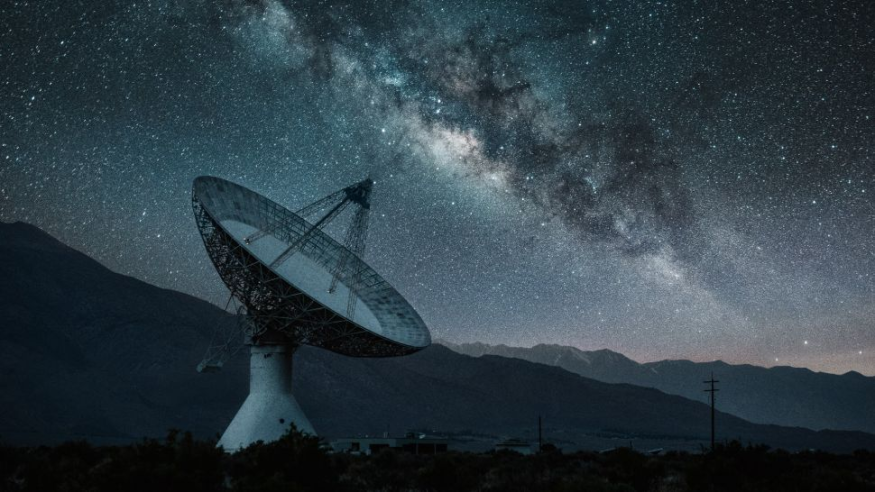In the past year, there have been several notable developments related to extraterrestrial life and space. These include the sighting of a metallic sphere flying in the path of a military jet, the detection of a mysterious signal by the world's largest telescope, and the possibility that Martian life may have gone extinct.
This year has seen several significant discoveries related to aliens and outer space. Here are some of the most memorable yet intriguing space stories of 2022.

Mysterious Zooming Metallic Sphere
In May, during a public hearing on unidentified flying objects (UFOs), officials from the Pentagon presented previously classified footage of a metallic sphere moving quickly across the flight path of a military jet. This was recorded for a short time in a video taken from the cockpit of an FA-18 fighter jet in 2021 and was also observed by the Navy pilot flying the jet, as well as being detected by the plane's sensors. However, military experts were unable to determine what the object was.
The officials were questioned by lawmakers about the results of a report from June 2021 that recorded 144 sightings of Unidentified Aerial Phenomena (UAPs). They were also asked about an alleged incident at Malmstrom Air Base in Montana, in which 10 nuclear intercontinental ballistic missiles (ICBMs) became inoperable while a glowing red orb was seen in the sky. The officials did not provide any details to confirm or deny this story.
There are credible claims that many UAPs are either prototype U.S., Chinese, or Russian surveillance drones, hypersonic test vehicles, or even airborne debris. Both the Pentagon and NASA have launched new investigations to try to distinguish these earthly objects from any that cannot be explained by earthly causes.

World's Largest Laser Searching For UFO
In December, scientists proposed using the Laser Interferometer Gravitational-Wave Observatory (LIGO), one of the world's largest lasers based in the US, to search for alien spaceships by detecting ripples in space-time caused by their movement. To produce detectable gravitational ripples that LIGO could pick up, the alien ship would need to be extremely large, weighing approximately the same as Jupiter, traveling at one-tenth the speed of light, and being within 326,000 light-years of Earth. The scientists also believe that a ship with advanced warp-drive technology could produce detectable gravitational ripples, potentially allowing us to reverse engineer this technology by analyzing the signature it leaves behind.

SOP For ET
In November, a group of policy experts and scientists announced the creation of the Search for Extraterrestrial Intelligence (SETI) Detection Hub, an organization that will develop a new protocol for how to handle contact with extraterrestrial life. A previous protocol was created by the SETI Institute in 1989, but it primarily focuses on how discoveries should be shared with the public and other scientists, and only provides a general outline for an international response to extraterrestrial communication, suggesting that scientists should seek advice from the United Nations. The new protocol will aim to give humanity more guidance on how to communicate and interact with extraterrestrial life, by helping scientists identify potentially intelligent signals in space and decode their meaning, as well as establishing procedures, through treaties, for how to respond to extraterrestrial contact if it were to occur.

ALSO READ: Top 10 Extraordinary Animal Sightings in 2022: From Hybrid Monkeys to a Bizarre Dragon Fish

Alleged Alien Signal
In June, there was a brief moment of excitement when scientists at China's Five-hundred-meter Aperture Spherical radio Telescope claimed that they had likely detected signals from an extraterrestrial civilization. The news spread rapidly across Chinese state media and social media platforms, as well as being reported by the international press. However, it was soon revealed that the narrow-band radio signal, which is typically associated with artificial sources, actually originated from Earth-based interference that appeared within the telescope in a way that was similar to an alien signal. This is not the first time that scientists have been mistakenly alerted to possible extraterrestrial signals; another well-known set of signals detected between 2011 and 2014 turned out to have been caused by scientists microwaving their lunch. Similar false alarms will likely continue to occur in the future.

Solving Fermi Paradox Riddle
In December, a research paper addressed the Fermi paradox, the question of why there seems to be a lack of intelligent life in the universe despite the almost infinite number of other worlds. The paper suggests that advanced aliens may only be interested in detecting sophisticated technology, rather than living alone, and may have even visited Earth before humans evolved. It is only with the development of radio technology in the 1930s that humanity produced a technological signature that could be detected by intelligent aliens. However, these messages often become garbled after traveling for a light year. The paper speculates that there may be no intelligent civilizations within a light-year of Earth, but there could be many farther away. Alternatively, it is possible that aliens picked up on our radio signals years ago and their response, traveling at the speed of light, is still on its way.

Collapsed Alien City
In May, scientists proposed an alternative explanation for the Fermi paradox, suggesting that advanced aliens may never contact us because they have chosen to reject a growth-based system altogether. According to this hypothesis, as space-faring civilizations become more technologically advanced, they eventually reach a crisis point where innovation can no longer keep pace with energy demands, leading to collapse. The only alternative is to abandon the model of "unyielding growth" in favor of maintaining equilibrium, but this comes at the cost of the civilization's ability to explore and expand beyond their star system and make contact with other civilizations, such as humans. This idea suggests that the lack of contact with extraterrestrial life may be due to the choices made by these civilizations rather than a lack of their existence.

Martian Dust Storms
In October, a study of the climate on ancient Mars suggested that Mars and Earth may have once had similar atmospheres and supported similar early microbial life that produced methane by consuming hydrogen. However, because Mars is farther from the sun than Earth, it was more reliant on a layer of heat-trapping greenhouse gasses, such as carbon dioxide and hydrogen, to maintain temperatures that were suitable for life.
As a result, when ancient Martian microbes produced methane, a significant greenhouse gas on Earth but less potent than hydrogen, they had a greater impact on the planet's ability to retain heat than their counterparts on Earth, eventually making Mars too cold to support the evolution of complex life. If this proposal is correct, it could mean that life may not be inherently self-sustaining in every environment where it arises, and may be able to destroy the conditions necessary for its existence through its actions. This is a concerning idea in the current context of biodiversity loss, resource depletion, and climate change.
RELATED ARTICLE : Top 10 NASA Events That Marked a Milestone in Space History
Check out more news and information on Space in Science Times.












